Frequently Asked Power Tool Questions
Actually,
some of these are frequently asked questions and others are "we
expect these to be frequently asked" questions about things.
There's a mix here of stuff we're tired of answering already (we
hope putting it here will cut down on the number of times we're
asked) and things we think will be like that.If you don't
see your question here, check out "It's a Feature, Not a
Bug"—more of this kind of stuff is there. Some other items that
might be on your "how do I" list may be covered in the other
chapters in Section 2 of this book. And if you still don't see
your question, try one of the public support forums for VFP. (See
the appendix for a list of places where kind folks answer
questions and chat about FoxPro.)Q: I'm using the
Component Gallery to organize all my stuff. But the built-in
catalogs don't really cover all the bases for me. I'd like to
create some new catalogs. I've tried right-clicking everywhere I
can think of and I can't find any way to make a brand new
catalog.A: We think the design of this particular feature
is terrible. Like you, we figured we'd be able to right-click in
the right pane of the Component Gallery while it displays the
list of catalogs, and then create a new one. But the Add Catalog
option there doesn't let you create a new one; it just adds a
catalog that already exists. There's a New option that appears
sometimes, too, but it doesn't include catalogs.Instead, you have
to click the Component Gallery's Options button and then choose
the Catalogs page. That page has a New button that lets you
create a new catalog. Click that button and specify a table to
contain the information for the new catalog. If, like us, you're
not big fans of embedded spaces in filenames, you can name the
table with your preferred naming convention, exit the dialog,
right-click the new catalog in the Component Gallery's left pane,
and then choose Rename to give it a useful name. The associated
table retains the original name, but the Component Gallery shows
the new name. Figure 2-3 shows the Options dialog with the New
button.
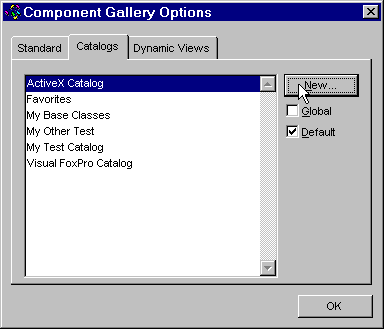
Figure 2-3: New Options for Old—Since when does
creating a new one of anything belong in an options
dialog?
Frankly, we can't think of a much worse way to handle
this.
Q: At conferences, I've seen speakers grab a class
from the Class Browser and drop it somewhere else to create an
instance. But I can never make this work when I try it. What's
the secret?A: This is one of those things that demos
really well, but is just complex enough to be hard to find on
your own. It's really a two-step process. First, click the class
you're interested in. Then, grab the icon that appears above the
listview (just below the Browser's title bar). That's what you
have to drag. The mouse pointer in Figure 2-4 is pointing at the
appropriate icon.
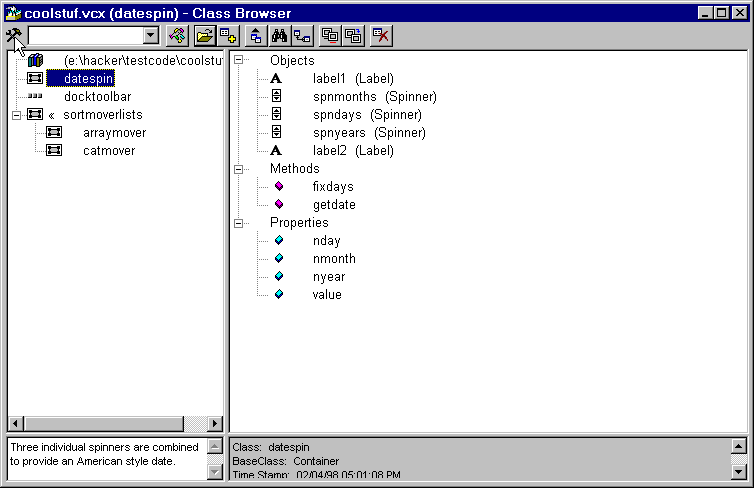
Figure 2-4: To drag an instance from the Class
Browser, you have to choose the class, then drag the icon at the
upper left. In this case, it's a hammer and wrench.
Q:
I want to add an array as a property of a class. But I can't
figure out how to get FoxPro to understand that the property is
an array.A: In coded classes, this one is very simple.
Just put the DIMENSION statement in the class definition along
with other properties. For example:
DEFINE CLASS Demo AS Custom
DIMENSION aAnArray[7]
cCharProperty = ""
Name = "Demo Class"
ENDDEFINE
When you're creating classes in the Class Designer (or forms
in the Form Designer), it's not really any harder—you use the New
Property dialog. There are two ways to get there. The first works
in all versions of Visual FoxPro. Use the New Property item on the
Class menu (or the Form menu in the Forms Designer). In VFP 6 and
later versions, you can choose Edit Property/Method from the Class
or Form menu, and then choose New Property from that dialog. Once
you reach the New Property dialog, when you enter the array name,
be sure to follow it with brackets (our preference) or parentheses
and the array dimensions. That's how FoxPro knows it's an array.
Figure 2-5 shows the New Property dialog with an
array.
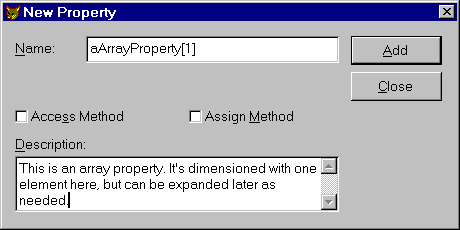
Figure 2-5: Adding an array property—don't forget
the dimensions.
You can either specify the exact dimensions
when you create the array property, or you can redimension it in
a method of the class. In forms, we often use array properties to
hold the items for a list or combo box. In that case, we
dimension the array as [1], and then redimension and populate it
with a query in the list or combo's Init method. Properties you
add to a class are listed on the Other tab of the Property Sheet.
When you add an array property, you can see on the PropSheet that
it's an array, but you can't specify an initial value (as you can
with other properties you add). You have to do it in a method.The
thing we keep forgetting when dealing with array properties is
that, like other properties, you can't just refer to them by
name. You have to specify the containing object along with the
property, or use This or ThisForm. So, for example, if we use an
array property of a form as the RowSource for a combo on that
form, the assignment looks like:
* This would be in the combo's Init:
This.RowSource = "ThisForm.aComboContents"
Q: I've specified hotkeys for all my menu pads by
preceding the hotkey in the prompt with "\<" (like "\<File").
But when my users press ALT+F, it doesn't activate the File
menu.A: Windows has two ways to let users press keys and
make things happen in the menu. You're already using hotkeys, which
let a user quickly choose an item when focus is already on the
menu. The other approach is menu shortcuts, which can be pressed at
almost any time to choose a menu item.In VFP, hotkeys are specified
by putting "\<" in front of the letter you designate to choose
the item. Pressing that letter chooses the item when the menu is
already highlighted. Actually, it's a little more complicated—the
exact effect of pressing any letter depends on whether any menu
popups are open. (A hotkey for a menu pad works only if no other
popups are open.)Shortcuts work when focus isn't on the menu or
when the popup containing the shortcut is open. Windows has a
number of pretty standard menu shortcuts, like CTRL+C for copy and
CTRL+Z for undo. ALT+underlined letter, used to open a menu popup,
is also a shortcut (not a hotkey). It's pretty standard to use
ALT+some key for menu pads and CTRL+some key for menu items.In the
Menu Builder, you specify shortcuts by clicking the Options button
for an item. In the dialog that appears, there's a section labeled
Shortcut. In the Key Label text box, press the key combination you
want to use as a shortcut. Then, if necessary, tab to the other
text box and type the description of the shortcut you want on the
menu. Figure 2-6 shows you the Prompt Options dialog. For a menu
pad, you may want to make the description empty, since no
description appears anyway. For menu items, typically you use
something like CTRL+A. (VFP is smarter about this than it used to
be, and the default Key Text is usually what you want.)One of the
hardest tasks in an application can be finding enough unique, yet
meaningful, key combinations for all the menu
shortcuts.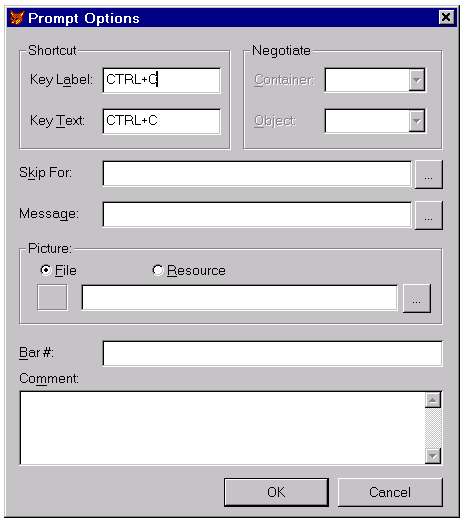
Figure 2-6: Specifying menu shortcuts—just click
Options in the Menu Designer.
In code, you specify shortcuts
with the KEY clause of the DEFINE PAD or DEFINE BAR command. (We
had to look that one up because it's been years since we've
defined a menu with code.)Q: Whenever I try to add
controls to a page of a page frame, they wind up on top of the
page frame instead. I've been going to the Property Sheet and
choosing the page I want first, but that's really tedious. There
must be a better way to do this!A: Your question can be
generalized to a broader question: How do I edit the contents of
a container and not just the container itself? It applies to page
frames, grids and any other container objects.As you've
discovered, you can do it by brute force. Use the combo in the
Property Sheet to select the object you want to edit. But, as you
note, that's pretty tedious. We'd scream bloody murder if that
were the only way to do it.Right-click to the rescue. Right-click
any container object, and the menu that appears includes Edit as
one of its options. Choose Edit and you have access to the items
inside the container. Click on a page and it comes to the top.
You can then drop controls on it.You can tell when you have
access to the items inside a container because there's a
diagonally striped border around the container. Figure 2-7 shows
a page frame with page 3 selected for editing.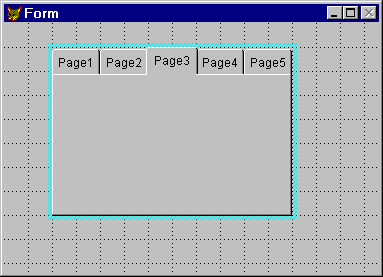
Figure 2-7: The striped border (reminds us of a
college tie) indicates you're editing the contents of a
container, not the container itself.
With grids, it's a little
more complicated. The Edit option doesn't even appear in the
right-click menu unless ColumnCount has a value greater than 0.
Once you choose Edit, you can click the header of a column to
select the header, or anywhere else in the column to select the
column.In VFP 7, this became much easier. Hold down the Ctrl key
while you click on a container object to automatically put it
into "edit" mode. But wait, it gets even better. To directly
select a contained object, put the mouse pointer over the object,
hold down the Shift and Ctrl keys, and click. This really saves
right-clicking and choosing Edit when you've got multiple levels
of containership (say a text box inside a container which sits on
a page in a page frame).Again, grids are a little different.
Holding down Shift and Ctrl while clicking on a column header of
a grid doesn't select the column header; it selects Column1, even
if the mouse pointer was over the header of Column3. Also, you
can't select the control (usually a text box) inside a column by
clicking on it (with or without using the Shift or Ctrl keys).
All that happens is that you select the column. You have to use
the combo box in the Property Sheet to select any controls inside
the column.Q: If I change a property in the Property
Sheet, then decide I didn't really mean it, how do I get rid of
my change so that it inherits from the parent class again? When I
delete the value I entered or put back the old value, I still see
the property value in bold—that means I'm not inheriting,
right?A: Yep, boldface in the Property Sheet means you're
getting a custom value, not the inherited value from the parent
class. To get back to inheriting, choose the property in the
PropSheet. Then right-click. The first option is "Reset to
Default."We think this is a really good item for the right-click
menu. It's easy to find and use. But we think it's really dumb
that right-click is the only way to get at this important item
through the interface. What if your mouse isn't working? What if
you have a handicap that makes it hard to use a mouse?By the way,
restoring a method to inherit is even easier than for a property.
Just delete all the custom code for the method and it'll inherit
from the parent class. One more "by the way"—you can restore
defaults programmatically by calling the object's ResetToDefault
method and passing the property or method you want to reset. For
properties, it even works at runtime.Q: I'm trying to
figure out where the code for the Click method of a command
button is located. The command button on the form is an instance
of a class that's a subclass of a subclass of a VFP
CommandButton. (For example, cmdOK is an instance of OKButton,
which is a subclass of MyCommandButton, which is a subclass of
VFP's CommandButton.)A: There are three ways you can
determine the location of the code that executes when you click
the button.First, the brute force way: Open the Click method of
the button and look there. If the code isn't there, check the
Class and ClassLibrary properties of cmdOK to see what class the
button is an instance of, close the form, open that class, and
look at its Click method. If the code isn't there, check the
ParentClass and ClassLibrary properties to see what the parent
class of this class is, close the class, open the parent class,
and look at its Click method. Continue this process until you've
found the code, or until you find that the ParentClass is a VFP
base class (which you can't open and look at).The brute force way
gets old fast, especially because you have to close the class
you're currently looking at before you can open the parent
class.The second way, new in VFP 7, is to look at the method in
the Property Sheet. If the method doesn't contain any code but
there is some code in this method somewhere in the class
hierarchy, you'll see something like "[Inherited MyCommandButton
c:\projects\vfp\controls.vcx]", telling you exactly where to
look. You still have to close the form or class to open the
source class, but at least you don't have to check every class
along the way to find the right one.The third way, added in VFP
6, is the best. If you open the Class Browser or Component
Gallery, a new toolbar with a single button is created. This
toolbar sticks around even after the Class Browser or Component
Gallery has been closed. The tooltip for the button, "Edit
ParentClass method", pretty much describes what it does for you.
Open the editor window for a method of an object or class, and
then click on the button in this toolbar. A text window appears,
showing the code for this method from the first class in the
class hierarchy that has code in it (the one that VFP 7 shows you
that the method was inherited from). There's no syntax coloring,
but you can edit the code in the window if necessary. (When you
close the window, you're asked if you want to save the changes
back to the parent class method.)If, for some reason, you're
stuck using Visual FoxPro 5.0 or 3.0, take a look around for Ken
Levy's SuperClass utility. This will give you the same
functionality.Q: When I create a grid, it has a text box
in each column. When I add the control I really want in a column
(say, a check box for a logical field), the default text box is
still there. How do I get rid of it so I don't have the overhead
of an extra control I'm not using?A: This is one of those
things that's pretty clumsy. We keep hoping the Microsofties will
come up with something better.In the Property Sheet, use the
drop-down list to choose the control you want to delete. Then
click on the title bar of the form or of the Form
Designer. Be careful not to click on the form itself—that'll
change the focus.Now press Delete to remove the control you don't
want.Fortunately, adding a different control is much easier. Just
right-click and choose Edit on the grid to get inside, and then
click the column to give it focus. Click the control you want in
the Form Controls Toolbar and then click in the column to drop
it.
 |
We were astonished to find that the Grid Builder doesn't
handle this stuff automatically. If you specify a control
other than a text box for a column in the Builder, the new
control is added automatically. But the text box isn't
removed. Why not? In our opinion, just plain bad
design.
|
Q: The Command Window is starting to annoy me because it's
always on top of every other window. How can I turn that
off?A: VFP 7 added the ability to dock certain "system"
windows, such as the Command, Data Session, and Properties
windows, just as you would a toolbar. This feature is kind of
cool, especially tab docking, which allows you to combine
multiple windows and select which one should be on top with a tab
button.However, this feature can also get in your way, especially
if you prefer that these windows behave the way they did in
earlier versions. Fortunately, it's very easy to turn off this
behavior: Right-click in the title bar of the window and choose
"Dockable" from the shortcut menu. That unchecks the item
(selecting it again checks it and turns the behavior back on) and
the window reverts to the behavior it had in previous versions of
VFP.Q: I do a lot of demos at my user group. It's a pain
to have to change the font every time I open an editor window or
browse a table so everyone in the room can see it. How can I
change the default font and size that VFP uses for these
windows?A: Another feature added in VFP 7 is the IDE tab
in the Tools | Options dialog. This tab allows you to specify the
appearance and behavior of the different types of windows
available in the development environment. As you can see in
Figure 2-8, there are a lot of settings here!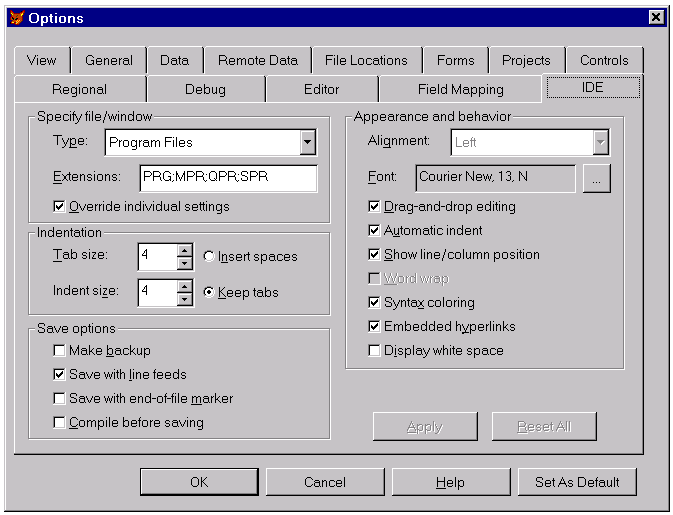
Figure 2-8: The IDE tab of the Tools | Options
dialog allows you to control the appearance and behavior of VFP
windows.
The way this tab works is a little weird. (Actually,
there is a precedent for this behavior: the Debug tab works
similarly. So, at least they're consistently weird.) You have to
select the window type you want to change; the rest of the
controls then reflect the settings for that window type. Any
controls that aren't applicable to the window type are
disabled.You can change all kinds of things in this tab,
including font and size, indentation, word wrapping, and save
options. "Override individual settings" is an interesting item.
If it's unchecked, the settings will only apply to windows you
haven't yet opened in an editor (such as new PRG files). For
windows you have previously opened, the existing settings, which
are stored in your FoxUser resource file, are used. If you check
"Override individual settings", the settings in this tab are used
for all windows of a given type, regardless of any settings that
were previously used for individual windows.To answer the
question, change the font and size for each window type (you have
to do them one at a time), check "Override individual settings",
and click on Apply. When you're done changing all the window
types, click on Set as Default if you want to make these settings
permanent.If you do a lot of demos, you might want to create
another Windows user login to use strictly for presentations. Use
the same procedure above, and Set as Default, to keep the
settings for this user. Not only can you set up VFP for
presentations, you can also set up the desktop appearance (you
might look at the Windows Standard – Extra Large scheme on the
Appearance tab of the Desktop Properties dialog). You can also
set it for the resolution of your projection device, and clean up
the menus to show only those shortcuts and menu options you need
for your demo (and you can clean off those shortcuts to Microsoft
Monster Truck Madness so nobody knows how you spend your free
time).Q: How do you know all this stuff?A: We'd
like to point out that it involves years of hard work,
perseverance, perspiration and brilliance, but no one would
believe us.The Hacker's Guide itself is a labor of love
that's consumed an incredible amount of time over the years, but
we haven't mastered VFP by locking ourselves away in a cave.
There are lots of people (we thank a lot of them in the
Acknowledgements in the front of the book) who spend time online
sharing their expertise with others. They have helped us or
taught us many of the answers we share. CompuServe, the Universal
Thread, Microsoft's newsgroups, Usenet newsgroups and hundreds of
Internet resources are invaluable. In addition, we own many books
on FoxPro, read a number of periodicals and a fair number of
non-FoxPro-specific books on subjects from project management to
user interface design (check out the Appendices for some
recommendations). We regularly attend conferences to keep up with
what's going on. We often resort to the Microsoft Knowledge Base
(online or available on the TechNet and MSDN CD-ROMs) to find out
the latest documented anomalies. So, while we all have pretty
good memories, we keep our resources (especially the Hacker's Guide) within reach so
that we can answer those tough questions.
Back to Table of Contents
Copyright © 2002-2018 by Tamar E. Granor,
Ted Roche, Doug Hennig, and Della Martin. Click for license
.






